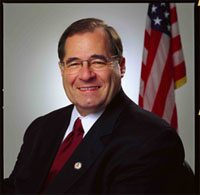Congressional Caucus to HHS: Do more to address LGBT youth suicides
Leaders of the U.S. House’s LGBT Equality Caucus called on the U.S. Department of Health and Human Services (HHS) Tuesday to do more to stop suicides among LGBT youth, calling the suicides “a serious public health problem which cannot wait.”
U.S. Reps. Jerrold Nadler (D-NY), Barney Frank (D-MA), Tammy Baldwin (D-WI), and Jared Polis (D-CO) sent a letter to Pamela S. Hyde, Administrator of HHS’ Substance Abuse and Mental Health Services Administration (SAMHSA). The letter asks the agency take “immediate action . . . to better protect LGBT youth and prevent further tragedies.”
Hyde is one of President Obama’s record number of LGBT appointees.
The letter questions SAMHSA’s current policies to fight LGBT youth suicide. Those policies are embodied in the agency’s recent draft plan, Leading Change: A Plan for SAMHSA’s Roles and Actions 2011-2014 (“Leading Change”).
The representatives ask whether SAMHSA is putting enough emphasis on “specific suicide prevention efforts” aimed at LGBT youth. Suicides among this group, they say, are “caused by a culture of bullying, hostility, and violence against the LGBT community. Young LGBT Americans thus face unique challenges which require specific and targeted prevention efforts.”
The letter notes that the Leading Change draft plan does mention an intent to help “[i]mprove mental, emotional, and behavioral health and well-being” of LGBT youth, among others, but they are concerned that this is secondary to other objectives of the plan.
The representatives ask Hyde to detail current and future plans to reduce the risk of suicide among LGBT youth. They also ask whether SAMHSA anticipates needing “additional resources or legal authority” to accomplish any planned efforts relating to combating suicide among LGBT youth.”
“We want to be helpful,” said Ilan Kayatski, a spokesperson for Rep. Nadler. “The intent is to urge them to do all they possibly can under their current authority and to ask them if they have everything they need.” He also said that some resources could come from existing programs, but, “We are prepared to follow through and provide legal authority and additional resources through legislation if necessary.” He said there is no legislation planned at the moment.
Dr. Richard McKeon, Suicide Prevention Branch Chief at SAMHSA, said in an interview that SAMHSA’s National Suicide Prevention Lifeline works closely with the Trevor Project, which runs a suicide prevention lifeline for LGBT youth. The federal National Lifeline will even transfer calls from LGBT youth directly to Trevor. But the Trevor Project receives no money from SAMHSA, said Charles Robbins, Trevor’s executive director. Robbins sits on the Consumer Subcommittee for the National Lifeline.
SAMHSA supports general suicide-prevention programs for youth in a number of ways, including through several grant programs. One grant funds the Suicide Prevention Resource Center (SPRC), a Congressionally mandated center that provides support, training, and resources to help organizations and individuals develop suicide prevention programs and policies.
SPRC released a 63-page white paper in 2008 called Suicide Risk and Prevention for Lesbian, Gay, Bisexual, and Transgender Youth. Anara Guard, senior advisor at SPRC, said in an interview that after releasing the paper, “we were asked to go out and speak more often than we could accommodate.”
SPRC is now creating a Workshop Kit that draws from the white paper. It is designed for people in organizations serving youth, such as schools, after-school programs, and social-service agencies. Guard says the workshop is intended to be co-led by one leader familiar with suicide prevention and one from the LGBT community. She expects the kits to be available this winter.
Additionally, SAMHSA has supported the creation of the National Action Alliance for Suicide Prevention that officially launched on September 10. The Alliance is a public-private partnership designed to advance and update the National Strategy for Suicide Prevention, a document published in January 2001 under Surgeon General David Satcher, just as the Clinton administration ceded the reins to President George W. Bush. At the time, a public-private partnership was envisioned to help guide the implementation of the Strategy.
SAMHSA official McKeon acknowledged that it has taken some time for the Alliance to take off, but “We were really pleased by the people who stepped forward to make it happen now,” including SAMHSA Administrator Hyde, Secretary of Health Kathleen Sebelius, and Secretary of Defense Robert Gates. SAMHSA is providing administrative and infrastructure support to the Alliance through the Congressionally mandated SPRC.
In her speech at the Alliance kickoff September 10, Sebelius noted that LGBT youth were a high-risk group. Coincidentally, the previous day, 15-year-old Billy Lucas of Greensburg, Indiana, had become the first in a number of suicides to be reported that month related to anti-LGBT bullying.
Two notable members of the Alliance executive committee are Trevor’s Robbins and Kevin Jennings, now Assistant Deputy Secretary for the Office of Safe and Drug-Free Schools (OSDFS) at the Department of Education. Jennings is also the founder of the Gay, Lesbian, and Straight Education Network (GLSEN).



Leave a Reply